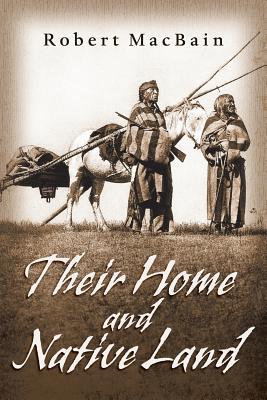In Their Home and Native Land, Scottish-born Toronto author Robert MacBain writes about Indigenous people forbidden to own their own homes or get a loan from the bank and needing permission from an Indian agent to sell their chickens or cows.
He writes about pregnant 13-year-olds at an Ojibway community in northwestern Ontario where the houses are in good condition, satellite dishes bring in news and entertainment, cars and pickups are new or less than five years old, lawns are littered with toys - and 90% of the residents are on welfare with no hope of getting a job.
He interviews an Ojibway chief in northwestern Ontario who was prepared to go to war and die if the Canadian Army opened fire during the 78-day standoff between Mohawk Warriors and the Royal 22nd Regiment at Oka, Quebec, in 1990.
He describes the devastating impact on an Ojibway community in northwestern Ontario when their lakes and rivers were poisoned with mercury from a British-owned pulp and paper mill.
Indigenous leaders talk about the iron-clad control bureaucrats at the Department of Indian Affairs exercise over the lives of their people and how well-meaning ministers are hobbled by the bureaucrats in Ottawa.
Their Home and Native Land provides detailed reports about the treaties the new Dominion of Canada made between 1871 and 1877 with the scattered bands of Ojibways, Crees, Blackfoot and other tribes on the former Hudson's Bay Company lands lying between Thunder Bay and the eastern slopes of the Rocky Mountains.
Read about Indigenous people forced off fertile land reserved for them and their children under the treaties by greedy land speculators aided and abetted by corrupt government officials.
The first organized native protest march in Canadian history and the events and circumstances leading up to it.
Prime Minister Pierre Trudeau threatening bloodshed in 1983 if Indigenous leaders try to set up their own independent government.
Ojibways fighting alongside Montcalm at the battle on the Plains of Abraham in 1759 and slaughtering English soldiers and civilians at Fort Michilimackinac in 1763.
How a culture clash between Indigenous leaders from western Canada and those from Quebec led to the demise of the National Indian Council which morphed into the National Indian Brotherhood in 1968 and today's Assembly of First Nations in 1982.
You'll meet some truly remarkable and fascinating Ojibways, Mohawks and Crees whose positive approach to life - despite the conditions they live under - is truly inspirational.
They have stories worth telling, worth reading.
